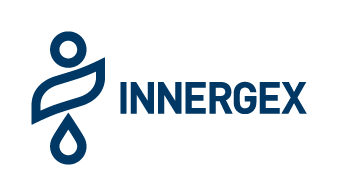Sustainability Reporting Initiative
Planet > Land
Implementing innovative solutions to minimize our terrestrial footprint
Innergex has a long track record of integrating each hydro, wind and solar renewable energy facility with as little disruption to its surrounding natural environment as possible.
Our hydro facilities occupy a relatively small footprint. Post-construction activities include long-term monitoring programs and land restoration programs that return temporarily disturbed areas back to their original state.
Wind farms can be built on productive or brownfield pieces of land. Though they are typically spread over larger tracts of land, the turbines themselves and related infrastructure (roads and transmission lines, etc.) occupy a small portion of the total area of a wind farm. The surrounding area can still be used for a variety of other productive purposes, including agriculture.
Solar farms are typically sited on low-productive or unused tracts of land and are not commonly shared for other uses. We do have one facility, Spartan, that doubles as the roof of a sizeable outdoor parking lot at Michigan State University, proving that integrating solar into other infrastructure for dual purposes is not only possible, but beneficial.
Land Management
It is important for Innergex to properly site our projects and then responsibly manage the land that hosts our facilities, whether that be private or public lands. Initial studies identify the most suitable and productive areas to develop a renewable energy project depending on the energy source. Baseline surveys and assessments are performed during the development phase to guide project layout in order to optimize future electricity generation while minimizing disruption to existing ecosystems and surrounding land-use. Oftentimes, for many private landowners, a solar or wind renewable energy project allows them to diversify their income by using land that is either used in conjunction with another use, or no longer usable for other purposes.
During land clearing, care is taken to minimize the footprint of the clearing and to remove and stockpile topsoil for future use. Post-construction, disturbed areas for temporary use (laydowns, construction camps, temporary access roads) are remediated to facilitate soil stability, growth of planted vegetation or natural regeneration. We continue to monitor the area throughout operations to ensure that we are not only compliant with our permits but deliver on the expectations of the surrounding communities, our employees, and our shareholders.
Innergex’s hydroelectric projects, by definition, are closely associated with natural waters and streams upon which the projects are situated. To avoid possible contamination, many Innergex facilities have adopted the use of bio-degradable, non-toxic, synthetic lubricants (non-petroleum based) in turbine and hydraulic systems where an elevated risk of leaks exists. Innergex continues to evaluate adoption of bio-degradable fluids as new options become available.
Environmental Incidents
| 2021 | 2020 | 2019 | |
| Number of significant spills >1L1 | 18 | 31 | 20 |
| Sulphur hexafluoride (kg) | 0 | 0 | 61.63 |
| Methane (kg) | 0 | 0 | 0.54 |
| NOx | 0 | 0 | — |
| SOx | 0 | 0 | — |
| Particulate matter (PM10) | 0 | 0 | — |
| Lead (Pb) | 0 | 0 | — |
| Mercury (Hg) | 0 | 0 | — |
1. All spills are cleaned up immediately and any affected soils were disposed of properly in accordance with provincial, state, or federal regulations.
Note: Excludes operations in France as they are managed by third-party operators and Chile as the data was not available by the time of this publication.
The Corporation received zero fines in 2021 for non-compliance in environmental matters.
Our Spill Management Procedure in British Columbia is designed to improve response and align with provincial regulations. Work continues on formalizing similar procedures in other areas of operation in line with provincial, state and federal requirements. The Innergex environment team launched an internal awareness campaign at our facilities to mitigate, reduce or eliminate releases of damaging halocarbons and other high emission gases. Since implemented, there has been zero incidents recorded.
Restoration
Innergex, is keenly aware that developing renewable energy projects has impacts on the landscapes where they are constructed and operated. Our priority is to ensure that our footprint is mitigated or minimized and that renewable energy facilities can be integrated as harmoniously as possible into the surrounding environment. During the planning stage of a project, the team at Innergex strives to locate facilities as near to existing transportation and transmission lines as possible, which not only allows for minimal land use impact, but is more economically efficient.
Every effort is made to return the temporarily disturbed land to its original state upon project completion and significant investments in long-term monitoring programs to evaluate the progress of the restoration programs put in place are made.
Replanting native vegetation, repairing riparian zones, and earthworks projects are important areas of focus that play a role in returning the temporarily disturbed land back to its original state during the post-construction phase. These activities are commonly monitored and approved by independent third-party professionals.
